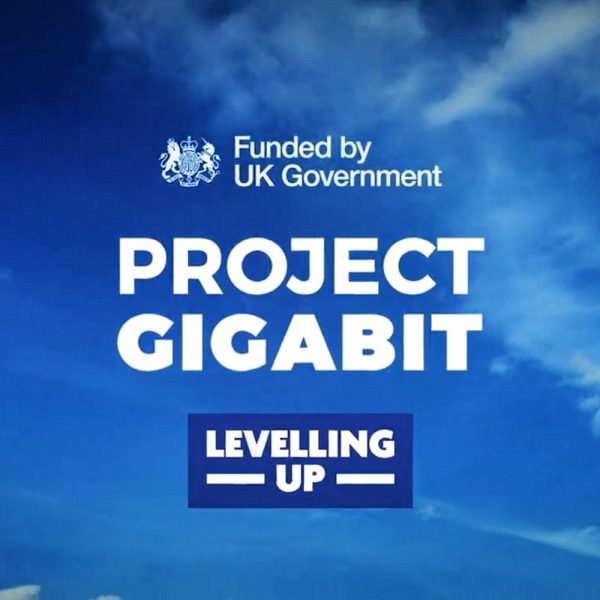BDUK Publish New Batch of Gigabit Broadband Coverage Reviews

The Building Digital UK team have published another batch of Public Reviews (PR) for the Government’s £5bn Project Gigabit broadband rollout – this time covering Herefordshire, Lincolnshire (inc. north-east Lincolnshire and North Lincolnshire) and East Riding, Cheshire and Gloucestershire in England.
Project Gigabit seeks to ensure that 85% of UK premises can access a gigabit-capable (1Gbps+) broadband ISP connection by the end of 2025, before reaching “at least” 99% by the end of 2030 (here and here). The public investment (£1.2bn has been released so far) for this is focused on serving the final 20% of the UK (5-6 million premises), where the private sector has failed to deliver (i.e. the hardest to reach rural and some sub-urban areas).
In England, this programme is centrally managed by BDUK, rather than local authorities. But the first step – before procurements can begin and contracts be awarded – is to identify precisely which areas are not expected to benefit from gigabit speeds under existing commercial builds, which covers related plans for the next 3 years. Only once you have the answer to that, can you identify where public funding will be needed to help address market failure.
Advertisement
The new reviews thus cover several regions across England under the Project Gigabit programme. Most of the details for these areas, including those from earlier phases, have already been revealed, but the final Public Reviews should confirm the exact intervention areas. We’ve summarised the latest additions below.
September 2022 Batch of Public Reviews for England
The OMR indicated that planned commercial coverage for gigabit-capable broadband would reach approximately 80,399 premises, and would therefore leave the remaining 44,351 premises without access to gigabit-capable broadband.
Estimated contract commencement date: January to March 2024
Indicative contract value: £30 to 60 million
Estimated number of uncommercial premises: 23,700Lincolnshire (including north-east Lincolnshire and north Lincolnshire) and East Riding (Lot 23)
The OMR indicated that planned commercial coverage for gigabit-capable broadband would reach approximately 198,487 premises, and would therefore leave the remaining 501,189 premises without access to gigabit-capable broadband.
Estimated contract commencement date: January to March 2024
Indicative contract value: £106 to 180 million
Estimated number of uncommercial premises: 105,700The OMR indicated that planned commercial coverage for gigabit-capable broadband would reach approximately 336,780 premises, and would therefore leave the remaining 240,892 premises without access to gigabit-capable broadband.
Estimated contract commencement date: January to March 2024
Indicative contract value: £85 to 144 million
Estimated number of uncommercial premises: 74,300The OMR indicated that planned commercial coverage for gigabit-capable broadband would reach approximately 204,772 premises, and would therefore leave the remaining 122,994 premises without access to gigabit-capable broadband.
Estimated contract commencement date: January to March 2024
Indicative contract value: £40 to 80 million
Estimated number of uncommercial premises: 44,700
All of the above Public Reviews are due to run from now until 5pm on 5th October 2022. Some readers will also notice that the “estimated number of uncommercial premises” above differs significantly from the OMR figure for “remaining premises without access to gigabit-capable broadband,” which is because the prior OMR figure also includes “Under Review” premises into the total (i.e. premises where suppliers have reported planned commercial broadband coverage, but where those plans have been judged through the OMR as potentially being at risk of not being completed).
In addition, any suppliers (network builders) that failed or were not yet ready with their plans to respond to the earlier OMR phase can still respond via the final PR phase in order to be included. This is important because the current market is rapidly evolving, with new networks and deployment plans seeming to crop up quite frequently.
We should point out that BDUK has previously launched a new Rolling National Open Market Review process (these will be run three times a year – i.e. January, May and September), which should in the future make it easier for them to keep track of new developments in commercial builds of gigabit broadband networks. The September review has just begun (here).
Advertisement
Mark is a professional technology writer, IT consultant and computer engineer from Dorset (England), he also founded ISPreview in 1999 and enjoys analysing the latest telecoms and broadband developments. Find me on X (Twitter), Mastodon, Facebook, BlueSky, Threads.net and Linkedin.
« ISP Hyperoptic Offers 9 Months FREE UK Full Fibre Broadband






















































Hmm!
The properties (19) in my postcode (and in an adjacent one I checked) in Lot 15 are listed as grey, meaning “a single qualifying gigabit infrastructure from a single supplier is available” (it is NOT) “or is to be deployed within the coming 3 years” (it is NOT – we are not in OR’s plans before 2027 at the earliest), then I set little store by this latest BDUK publication.
Gigaclear decided they could not fulfil their contract to bring fttp to my neck of the (literal) woods and descoped us in November 2021, and thus it seems their earlier plans may have made it into this recent report.
So what was the point of the OMR in April/May this year if not to not update the plans?
Well, contacting BDUK does work. Received the following reply this afternoon:
“… The outcome of the Public Review will be shown in terms of ‘White’, ‘Grey’, ‘Black’ and ‘Under Review’ premises. BDUK will only subsidise build to premises which have been designated as ‘White’.
As you noted in your response, your postcode HR2 *** has been classified as ‘Grey’ following Open Market Review. However, we have looked into your postcode and can see that, based on the latest available information to BDUK, your postcode would currently be classified as ‘White’. This means that your postcode would be eligible for inclusion in an intervention area, provided no further credible commercial plans are received as part of this ongoing Public Review. Please note this does not guarantee that your postcode will be included in the upcoming procurement process.
It is important to note that evaluation of Public Review responses is ongoing and therefore the above may change.”